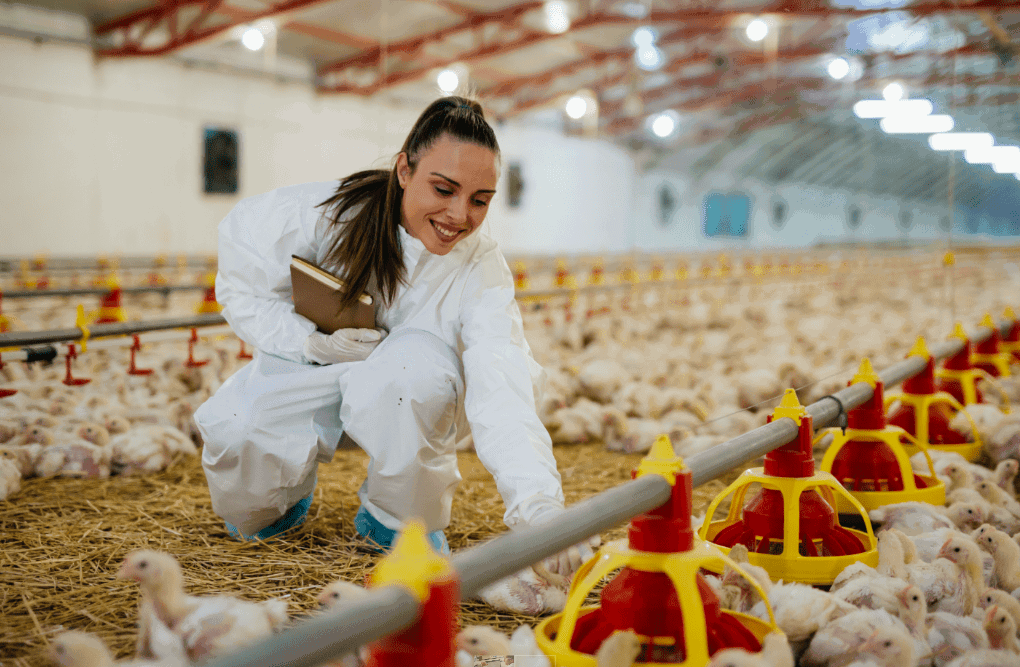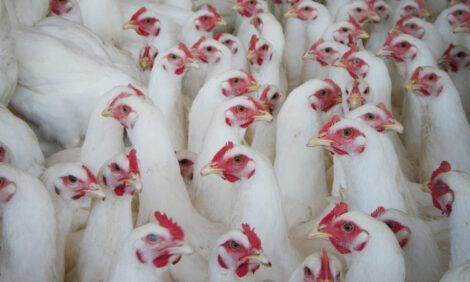



Strategies to reduce costs and enhance performance using alternative dietary fibre sources
Stimbiotic supplementation is a tool to optimise feed fibre utilisationPoultry producers continue to face mounting economic and environmental pressures that impact both operations and bottom line. From ever-rising feed costs to the variability of feed ingredients, the industry has experienced its fair share of obstacles over recent times.
While tightening regulations are essential for ensuring environmental sustainability, food safety and animal welfare standards, maintaining strict compliance and ensuring a profitable business can be a challenge. Balancing profitability, sustainability and operational efficiency becomes a constant juggling act.
Targeted feeding strategies can serve as an important tool in the producer’s toolbox; helping to reduce the cost of poultry production, through lower feed costs, lower the farm’s environmental footprint, and achieve improvements in poultry produce. Here, we look at the cost and sustainability benefits of deploying alternative nutritional strategies to reduce soybean meal (SBM) inclusion in poultry diets, while supporting optimal performance.
Reducing reliance on soybean meal
SBM – a primary source of protein and amino acids – has long been the conventional choice in broiler diets. However, there is a growing shift to reduce reliance on this raw ingredient, prompted by ongoing price volatility and concerns over its environmental impact, particularly the desire to reduce nitrogen emissions and improve livestock sustainability.
When looking to replace or reduce SBM in feed, it is important to consider the fibre profile of alternative individual ingredients, to assess their characteristics and thus their solubility and fermentability. Doing so informs the best practical strategies to take on farm to ensure optimal digestive function and, in turn, overall broiler performance.
Two of the main alternative local ingredients to SBM are sunflower meal (SFM) and rapeseed meal (RSM). When used on their own, the anti-nutritional effects can outweigh the appeal of their affordability. The fibre content and characteristics of these ingredients can affect fibre digestibility, gastrointestinal development and gut health, and animal performance.
However, supplementing the diet with a stimbiotic has been proven to mitigate these negative effects by stimulating the establishment of a fibrolytic microbiome in the hindgut, ultimately improving performance across different parameters and delivering positive benefits to the production line.
Stimbiotic supplementation offers far greater flexibility in the choice of feeding strategy to apply by enabling producers to use cheaper, local ingredients - supporting their sustainability efforts through reduced SBM inclusion.

Influence of stimbiotic supplementation on broiler productivity
During a 35-day trial involving 1,024 Cobb 500 male broilers, researchers analysed the influence of feed fibre profile and stimbiotic supplementation (Signis, AB Vista) on broiler productivity and hindgut fermentation. With a total of 16 birds for each of the 64 pens, three feeding phases were evaluated: the starter (0-10 days), grower (11-21 days) and finisher phase (22-35 days).
The experimental diets consisted of four basal diet formulations, each differing in its fibre profile. The first served as the control group, featuring SBM as the primary source of protein, with differing feeding ratios for each respective growing phase. Two other groups were given either SFM or RSM as the primary ingredient, and a fourth group were given a 50/50 blend of the two to further explore the variations in soluble and insoluble fibre quantities, resulting in 8 treatment groups. Performance parameters, intestinal health indicators, hindgut fermentation markers and litter quality parameters were then evaluated to gain insights into dietary impacts.
The trial results demonstrated that stimbiotic supplementation significantly improved broiler performance and hindgut fermentation. Across all dietary formulations, there were marked improvements in average daily feed intake (ADFI) and average daily gain (ADG), with notable enhancements observed in the 50/50 diet group.
Crucially, the addition of the stimbiotic increased production of beneficial short-chain fatty acids (SCFAs) in the ceca, indicative of improved fermentation and most probably gut health status, giving better value to the fibre. The heightened SCFA production was closely linked to improved performance metrics, showing that the stimbiotic played a vital role in optimising nutrient absorption by the animal and, consequently, overall productivity.
Despite variations in soluble and insoluble non-starch polysaccharides (NSPs) across different diets, favourable feed conversion ratios were achieved with the stimbiotic, highlighting its efficacy across different dietary compositions. In optimising fibre fermentation and therefore energy release to the animal, it can enhance the animal’s resilience to challenges faced during commercial production.
Considerations for feed formulations
When considering alternative protein sources, in this case RSM and SFM, the focus shouldn’t only be on their differing amino acid (AA) profiles as it is important to assess both fibre and AA in feed formulations. For fibre, the key distinction lies not only in the content of soluble NSPs but also in the ratio of insoluble to soluble NSPs; RSM tends to have a higher proportion of insoluble NSPs, which appears to affect animal performance the most. Research suggests that SBM can be replaced with RSM without any negative effects – with stimbiotic supplementation (Signis) serving as a valuable safeguard to ensure optimal gut health and fibre fermentation.
Using additional services, such as near-infrared (NIR) technology can further support in identifying the best feeding strategies to get more from the fibre fraction and improve gut function. For example, AB Vista’s NIR service, with its robust global calibrations database spanning more than two decades, allows quick and accurate analysis of the NSP content of feedstuffs, with the soluble and insoluble fractions determined.
Conclusion
With escalating feed costs, tightening regulatory demands and feed variability, many producers are looking towards alternative nutritional strategies to increase productivity and financial returns.
Stimbiotic supplementation is a tool to optimise feed fibre utilisation and offers flexibility in choosing cheaper and more local ingredients, like sunflower and rapeseed meal, depending on requirements. Reliance on soybean meal can be reduced while ensuring maximum performance. Utilising NIR technology can further support the formation of optimised dietary strategies by rapidly analysing fibre profiles and ensuring precise control over feed quality.
Taken together, these steps can reduce the cost of production while also delivering environmental and animal gut health benefits, through lower nitrogen emissions – supporting producers globally in achieving key business objectives.











